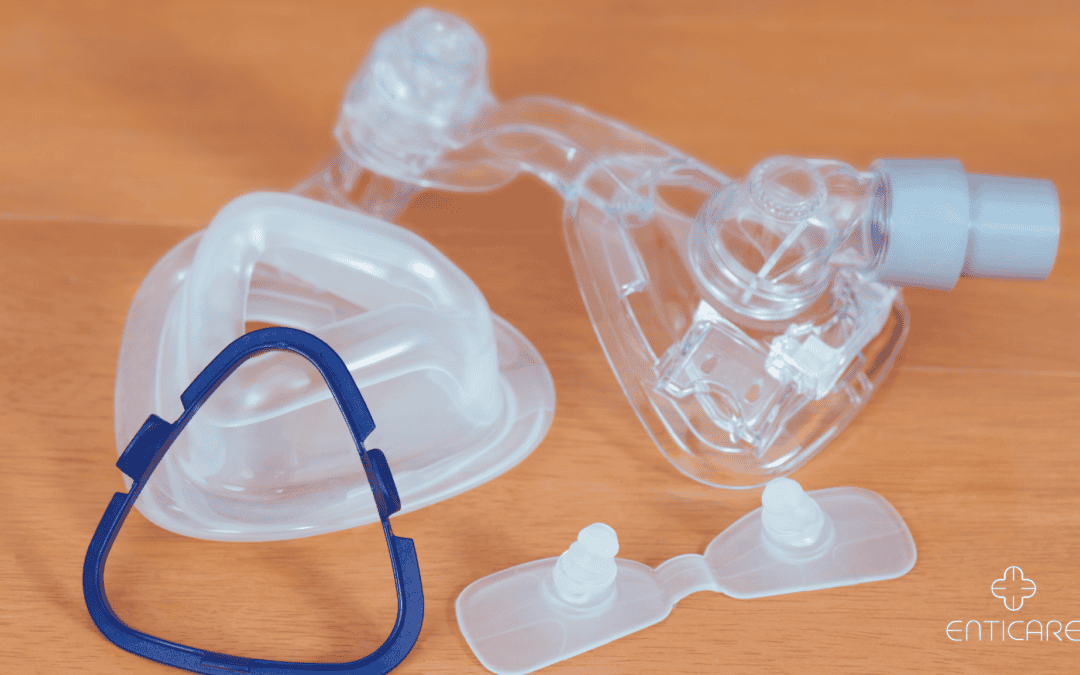Living with sleep apnea often means wearing a CPAP mask every night. Many users worry about waking up with unsightly marks on their faces. This guide explores why these marks appear, how to prevent them, and what you can do to ensure your CPAP mask fits comfortably.
Understanding CPAP Mask Marks
Why CPAP Mask Marks Occur
CPAP masks press against your skin to create a seal. This pressure can lead to indentations and redness. Additionally, the materials of the mask can sometimes irritate the skin, causing further discomfort and marks.
Types of CPAP Masks and Their Impact
Different CPAP masks apply pressure in various ways. Full-face masks cover a larger area and may leave more noticeable marks. Nasal masks and nasal pillow masks cover smaller areas and often result in fewer marks.
Skin Sensitivity and Reactions
Some people have more sensitive skin, making them prone to marks and irritation. If you have sensitive skin, you may experience more noticeable marks and discomfort from your CPAP mask.
Tips for Preventing CPAP Mask Marks
Choose the Right Mask
Selecting the right mask can significantly reduce the chances of waking up with marks. Try different types of masks to find the one that fits your face best and causes the least amount of pressure. Some masks come with softer cushions or different materials that may be gentler on your skin.
Adjust Your Mask Properly
Proper adjustment of your CPAP mask is crucial. Make sure the mask fits snugly but not too tightly. Over-tightening can increase pressure on your face and lead to more pronounced marks. Refer to your CPAP mask’s manual for adjustment guidelines or seek help from a professional.
Use CPAP Mask Pads or Liners
CPAP mask pads or liners can provide a barrier between your skin and the mask. These accessories help distribute the pressure more evenly and reduce direct contact, which can minimize marks. They also absorb sweat and oils, keeping your skin cleaner and reducing irritation.
Skin Care Routine for CPAP Users
Clean Your Mask Regularly
Cleaning your CPAP mask regularly can help prevent skin irritation and marks. Use mild soap and water to clean the mask, and avoid using harsh chemicals that can cause skin reactions. A clean mask reduces the risk of bacteria build-up that can lead to skin issues.
Moisturize Your Skin
Keeping your skin well-moisturized can prevent dryness and irritation. Use a gentle, fragrance-free moisturizer before putting on your mask. Moisturized skin is less likely to develop marks and redness from the pressure of the mask.
Regularly Rotate Mask Types
If possible, rotate between different types of masks. This can prevent prolonged pressure on the same areas of your face. Alternating masks can give your skin a break and reduce the likelihood of developing marks.
When to Seek Professional Advice
Persistent Marks and Discomfort
If you continue to experience marks and discomfort despite trying various solutions, consult a healthcare professional. They can help you find a mask that fits better or suggest alternative treatments.
Allergic Reactions
Some users may experience allergic reactions to the materials in their CPAP mask. If you notice persistent redness, itching, or swelling, you may be allergic to the mask’s components. A healthcare professional can recommend hypoallergenic masks or liners.
Adjusting CPAP Settings
Sometimes, adjusting the settings on your CPAP machine can reduce the need for a tight mask seal. Lowering the pressure slightly or using features like ramp time can make the mask more comfortable to wear without compromising the effectiveness of your sleep apnea treatment.
Exploring Alternative Solutions
CPAP Pillow
A CPAP pillow can help maintain the proper position of your head and mask while reducing pressure points. These pillows have cutouts for the mask, allowing you to sleep more comfortably on your side or stomach.
Headgear Adjustments
Sometimes, the headgear can cause pressure and marks. Adjust the straps to ensure they are not too tight. Consider using headgear with padding for added comfort.
Hydrating Mask
Some newer CPAP masks come with built-in hydration systems that keep your skin moist and reduce the chances of marks. These masks can be more comfortable for long-term use.
Conclusion
Waking up with CPAP mask marks can be frustrating, but you can take several steps to minimize them. From choosing the right mask to maintaining a good skincare routine, these strategies can help keep your skin clear and comfortable. If you continue to experience issues, do not hesitate to seek professional advice.
To learn more about CPAP masks and get personalized advice, schedule an appointment with us here or call us at 480-214-9000. Our experts can help you find the perfect solution for a restful and comfortable night’s sleep.

